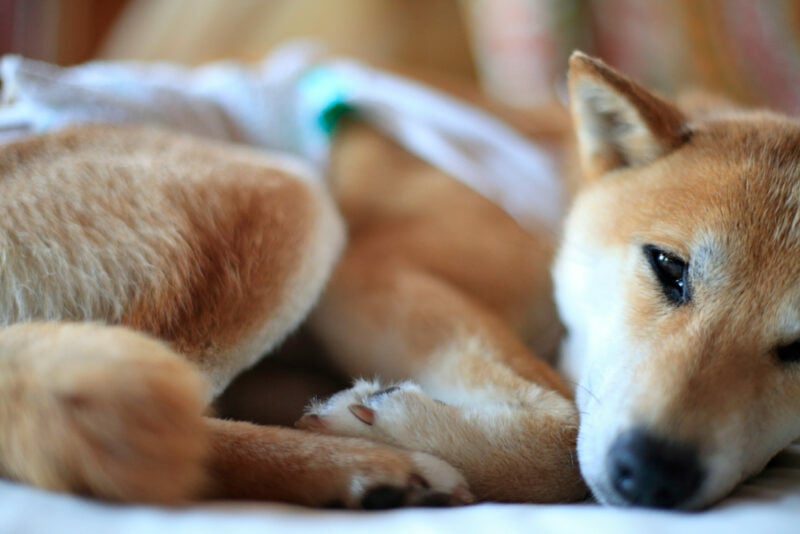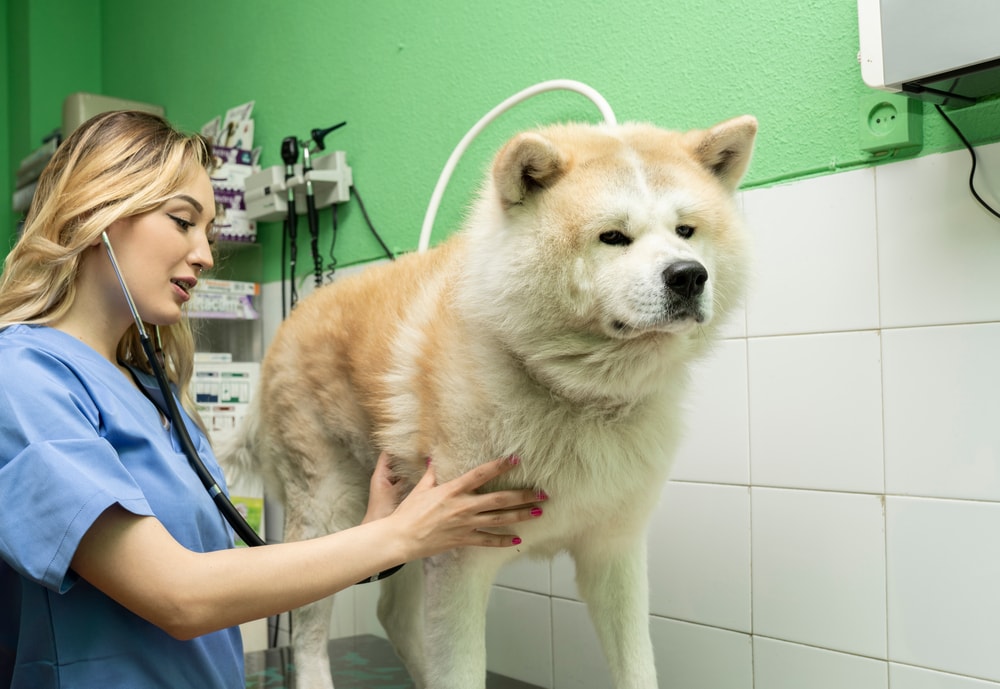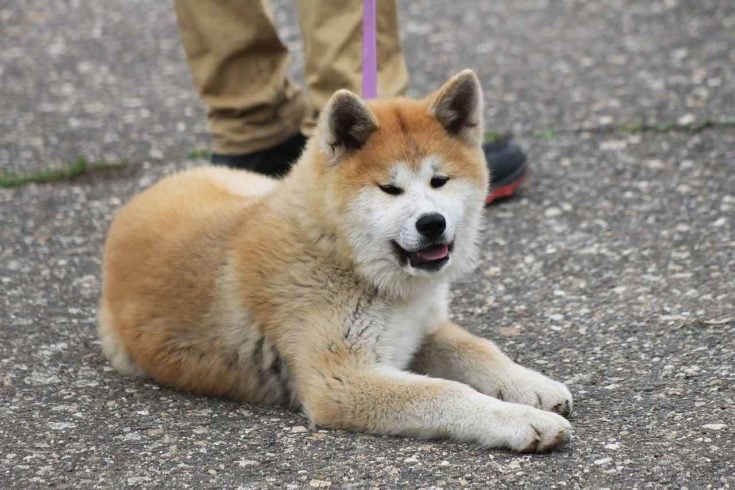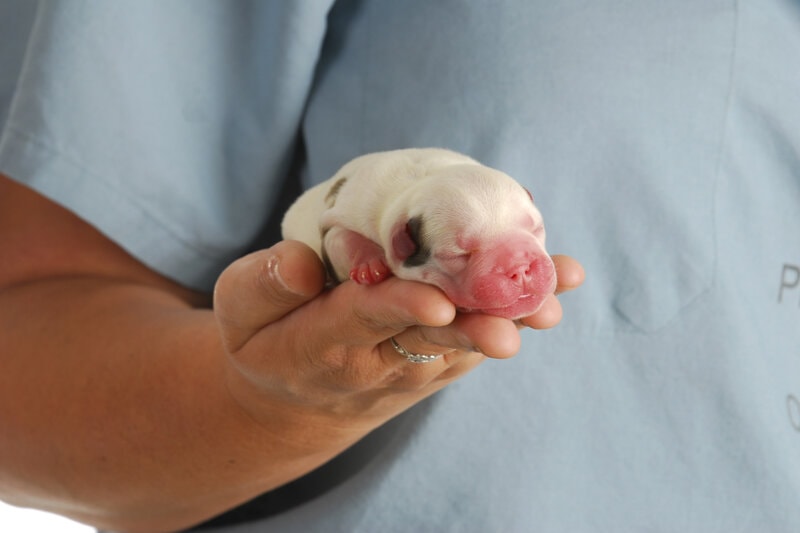10 Common Akita Health Issues (Vet Answer)
Updated on

Akita’s are a large, loyal dog breed from Japan originally bred as a large game hunting dog but now often is a family dog with a protective streak. These large dogs have an impressive lifespan considering their size, but the breed is plagued by some diseases that are worth knowing about. We’ve collected a list of 10 common issues of Akitas to learn about.
The 10 Common Akita Health Issues
1. Hypothyroidism
Hypothyroidism in dogs, including Akitas, is predominantly an autoimmune disorder in which a dog’s immune system attacks the cells of the thyroid gland, decreasing its ability to produce thyroid hormones.
Akitas with hypothyroidism may have areas of thin or balding hair coat, poor skin condition potentially including infections, weight gain, and other fat deposit-related illnesses such as atherosclerosis, corneal lipidosis, lipemia retinalis, and mild GI signs like vomiting, constipation, or diarrhea.
Treatment consists of daily thyroid hormone supplementation and regular blood rechecks.

2. Pemphigus Foliaceus and Erythematosus
This is an autoimmune disorder affecting a dog’s skin. The immune system attacks inter-cellular proteins that hold skin cells together. In pemphigus erythematosus, this is confined only to the face. Otherwise, it can occur anywhere on the body. Pemphigus is usually a disease of adult to senior dogs and looks like hair loss, scabs, open sores, itching, and scaling skin throughout the body, but it usually starts around the head and neck.
Since this is an autoimmune disease, immunosuppressive medication such as steroids is often given for the rest of the dog’s life.
3. Sebaceous Adenitis
Another autoimmune disorder (you will notice this is a theme for Akitas), in this case, the immune system attacks the sebaceous glands of their skin. Sebaceous glands lie immediately adjacent to and connected to hair follicles, which is important for healthy and soft skin and hair. Unlike pemphigus, sebaceous adenitis is more common in younger to middle-aged dogs.
Signs of sebaceous adenitis can differ based on a dog’s coat type, but for Akitas, it generally can look like symmetrical hair loss and a dry/brittle coat of the remaining hair. This disease can be itchy, and signs usually start at the head and work their way down the spine. Deep skin infections can develop, leading to fevers and weight loss.
Treatment consists of immunosuppressive medication and topical treatments such as medicated shampoos that aim to control skin infections and soothe the skin. Supplements that support healthy skin and hair, such as omega-3 fatty acids, can also be helpful.

4. Uveodermatologic Syndrome
This autoimmune disease involves the immune system attacking melanocytes, which produce and contain the pigment melanin. The highest concentration of these in dogs is on the skin and in the eyes, and so Akitas with this disease can develop eye conditions such as uveitis and retinal separation leading to blindness, and vitiligo and hair whitening due to depigmentation.
Immunosuppressive eye drops can be given to help treat uveitis in addition to oral immunosuppressives. Since the skin aspect of this disease is mostly only a cosmetic change, the focus is on treating their eyes.
5. Immune-Mediated Polyarthritis
Immune-mediated polyarthritis (IMPA) can happen for many reasons, and several different types are found in Akitas, such as idiopathic, associated with systemic lupus erythematosus, also associated with the polyarthritis-meningitis syndrome, drug-induced polyarthritis, and a breed-specific form of IMPA that affects adolescent Akitas. All these polyarthritis conditions include an inflammatory immune response against the synovium in the dog’s joints but may also include reactions in other areas of the body.
Akitas with IMPA often show extreme signs of joint pain and walk with a notable stiff, straight-legged gait that leaves them potentially unable to stand, joint swelling, and joint effusion. Some dogs may instead or additionally have more generalized signs like lethargy, anorexia and weight loss, swollen lymph nodes, and a fever.
Treatment of IMPA includes immunosuppressive medications and trying to identify any underlying trigger that can be avoided in the future.

6. Congenital Deafness
Congenital deafness can have several causes but is seen in Akitas with white pigmentation. In Akitas, it often also presents with the onset of vertigo, which will resolve, but the deafness will persist and is found in both ears. Melanocytes, which usually are responsible for pigment production, are also important for maintaining an appropriate environment in the inner ear, and a lack of melanocytes can lead to deafness.
Dogs with congenital deafness usually show signs very early in life, and this is unfortunately not treatable.
7. Hip and Elbow Dysplasia
Hip and elbow dysplasia are genetic conditions and developmental abnormalities of the associated joints. As a dog grows, the disease’s severity and signs of illness will increase. Lameness after exercise and abnormal gaits can be a clue that dysplasia is present, and a physical exam and X-rays with a veterinarian can confirm this. Both conditions are typically treated with surgery.

8. Osteoarthritis
Similar to dysplasia, Akitas are predisposed to this disease due to their size and genetics. This is a progressive erosion of joint cartilage as a dog ages that cannot be cured but can be slowed and treated through many interventions, including joint supplements, anti-inflammatory and pain medications, joint injections, physical therapy, and integrative medicine techniques like laser therapy and acupuncture.
Other joint diseases, such as dysplasia or trauma, can increase the risk or severity of osteoarthritis.
9. Progressive Retinal Atrophy
Progressive retinal atrophy (PRA) is the degeneration of the photoreceptor cells at the back of the eye (retina) leading to blindness, which for Akitas usually presents in middle-aged to senior dogs and usually takes 1 to 2 years to complete progression. This is a genetic condition that unfortunately has no known effective treatments.

10. Gastric Dilatation-Volvulus (GDV)
This condition is predominantly seen in large dogs with large, deep-chested rib cages and is more common in male dogs. Since Akitas fit the physical description, they are unfortunately prone to developing GDV.
In GDV of large breed dogs, the stomach bloats for various reasons, often associated with stress and activity immediately after eating a meal, then twists on itself and compresses important blood vessels in the abdomen, which can cause shock and death very quickly.
This is an emergency situation, and any Akita showing signs of GDV, which include a suddenly bloated abdomen, rapid, shallow breathing, retching, drooling, pale gums, restless behavior, and sudden collapse, should be taken to a veterinary ER immediately.
GDV can be avoided in high-risk dogs, which is any male dog expected to be over 100 pounds, by surgically tacking the stomach to the wall of the abdomen at a young age to prevent twisting of the stomach (though this doesn’t prevent bloat). Feeding multiple meals daily instead of one and keeping your Akita still for 10–30 minutes after eating can also help prevent episodes.
Conclusion
While often generally very healthy and long-lived dogs, Akitas do have several significant diseases that they are genetically predisposed to. Breeders are working to remove as many of these diseases from the genetic lines of Akitas as they can, and genetic testing is available for some of these conditions if you want to investigate the risks for your specific Akita.
Featured Image Credit: mannpuku, Shutterstock














